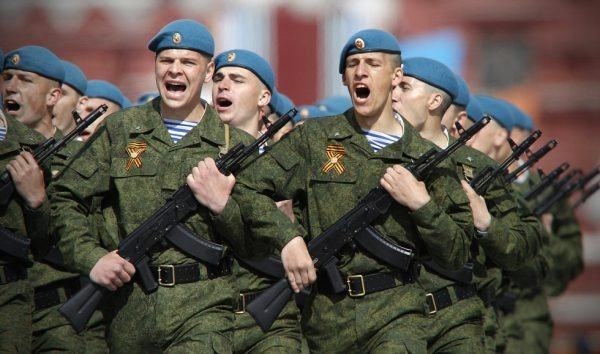Soviet Airborne Forces
19 September, 2018 | General News

When it comes to imagining a conventional Cold War-goes-hot scenario, the dominant images are of armies of tanks and armored vehicles clashing across the relatively open landscape of Central Europe under an umbrella of modern jet interceptors and fighter-bombers. Indeed, the very name “Red Army” seems synonymous in the Western imagination with massed armored formations slashing forward into the heart of Germany, heedless of loss or such annoyances as NATO infantry. What these preconceptions obscure, however, is that the USSR also fielded the largest light infantry airborne assault force in the world during the Cold War, the VDV (Vozdushno-desantnye voyska, translated as "air assault forces"), and produced the fleet of transport aircraft to deliver these paratroopers to the battlefield. In this blog we’ll look at the Soviet parachute assault forces, the desantniki, and how they play into the war depicted in Northern Fury.
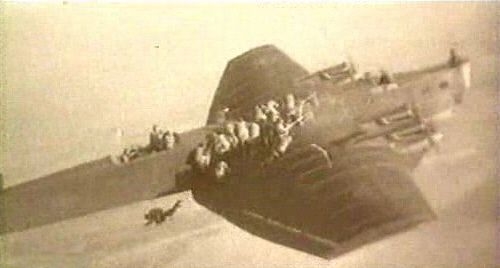
The Soviets pioneered airborne assaults...in typical Soviet fashion
Let’s start with the Soviet experience in airborne operations during WWII. The Soviets conducted two major airborne drops during the war: the Vyazma operation in early 1942 (about 7,000 paratroopers dropped) and the Dnepr/Kiev operation in 1943 (about 4,500 paratroopers dropped. Both operations were unsuccessful and incurred heavy losses, along with many smaller (and more successful) drops. Like the other belligerents, the Soviets learned during that conflict that lightly-armed parachute troops are extremely vulnerable to counterattack by armored forces. However, the Soviets developed different a different solution to overcome the inherent vulnerability of their airborne forces than did their Western counterparts. Whereas the Germans decided after their disastrous drop on Crete that airborne assaults were entirely too risky, and Britain and the US decided that airborne troops should only be risked on very limited objectives after their overreach during Operation Market Garden, the Soviets decided that the best way to make desantniki survivable on the modern battlefield was to make them mobile, and armored.
Vehicles
Of course, designing armored vehicles that can be dropped under parachutes, not to mention the aircraft to carry them, is easier said than done. However, in time the Soviets fielded an impressive array of light armored vehicles that made their desantniki self-mobile and gave them impressive firepower for such light forces.
BMD-1s on parade...
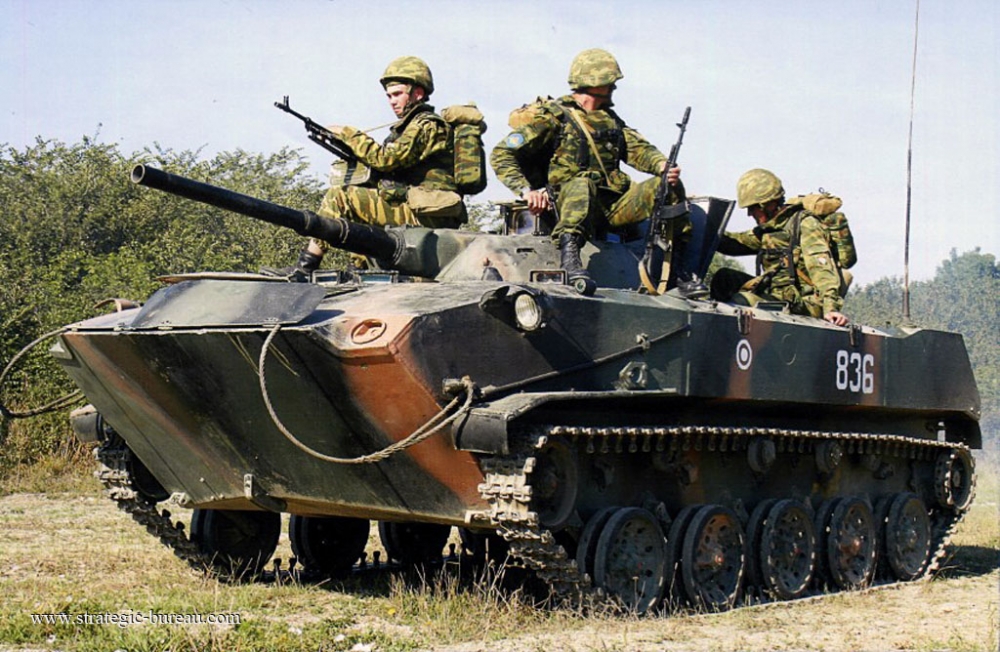
...and in action
By the late 1980s, the Red Army had largely replaced their first generation of airborne assault vehicles, with the new line of BMD vehicles (BMD stands for Boyevaya Mashina Desanta, literally assault vehicle of the airborne troops). The BMDs are small, lightly armored fighting vehicles with a limited troop-carrying capacity and light armor, but impressive speed and firepower. The BMD-1 variant fields a 73mm gun in a similar turret to the larger BMP-1, while the BMD-2 carries a 30mm autocannon similar to the BMP-2. Both mount coaxial and bow-mounted 7.62mm machineguns and can carry anti-tank guided missile (ATGM) launchers atop their turrets. Not too shabby for a vehicle that also needs to be able to fall out of an airplane.
BMD-2s (and -1s) are light enough to be moved by heavy transport helos like Mi-6s and Mi-26s
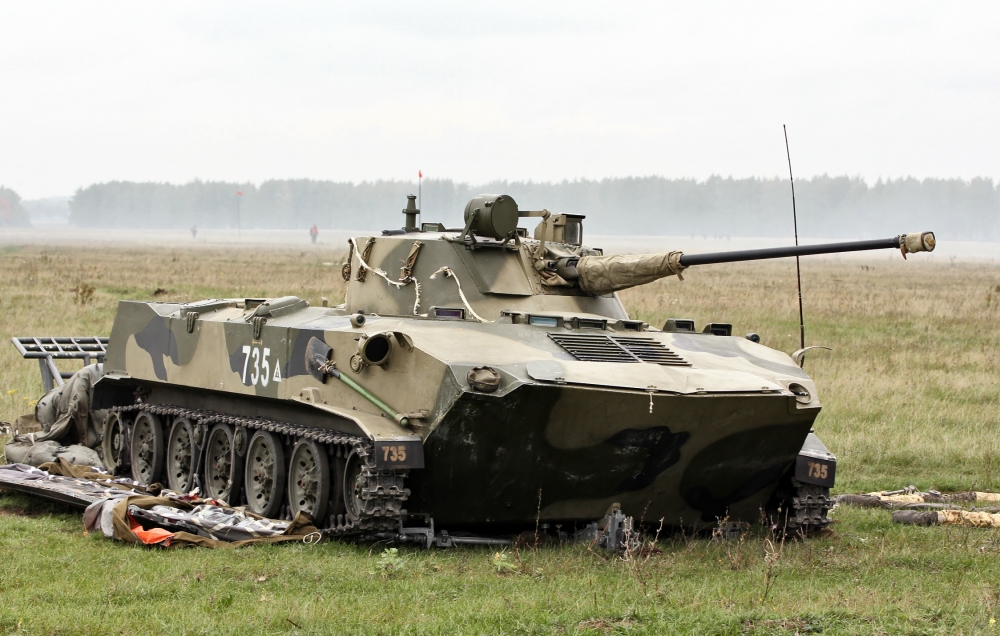
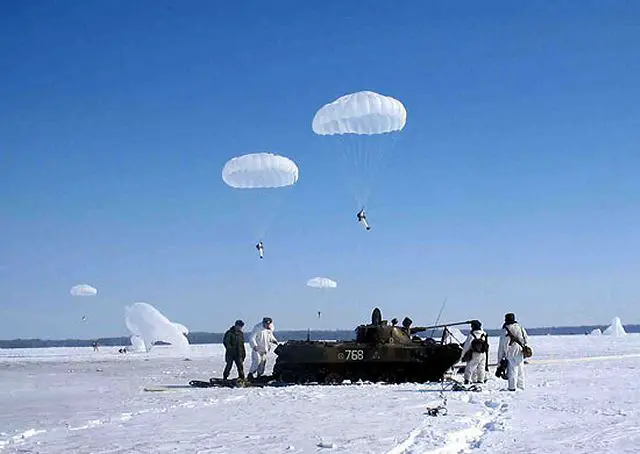
Or to be dropped by parachute
Soviet airborne doctrine held that every heavy weapon needed to be self-mobile, and towards this goal the desantnik artillery systems also took advantage of the BMD chassis, marrying it with a turreted 120mm gun-mortar to provide indirect fire support in the form of the 2S9 "Nona." Furthermore, the BMD chassis has lent itself to command variants, prime mover variants, and mortar carriers.

2S9 Nonas at work
All these vehicles possessed one more characteristic in common: they were designed to be dropped under huge parachute arrays with the crews inside! To do this safely, the Soviets developed a sophisticated rocket braking system that slowed the vehicles’ descent in the last few seconds of the drop.

Yes, there's a crew in there
Altogether, the mechanization of Soviet desantnik forces made these formations formidable opponents, particularly in lightly defended rear areas.
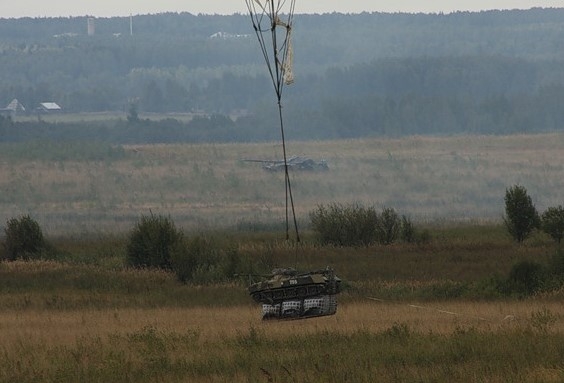
Hope those retro-rockets fire soon
Aircraft
Having all these armored vehicles to ride around in is nice, but not very helpful unless you can get them and the paratroopers to the battlefield. To this end, the USSR developed some powerful transport aircraft, and produced them by the hundreds for both military and civilian purposes. In the centralized system of the Soviet Union, the civilian airframes would have been quickly called to military service in the event of war.
One of these aircraft is the An-12 “Cub.” The An-12 is a four-engine turboprop transport roughly equivalent to the US-designed C-130 Hercules. It is capable of transporting 60 paratroopers or two BMDs to a range of over 2,000 miles. Over 1,200 An-12s were produced in numerous variants and configurations.
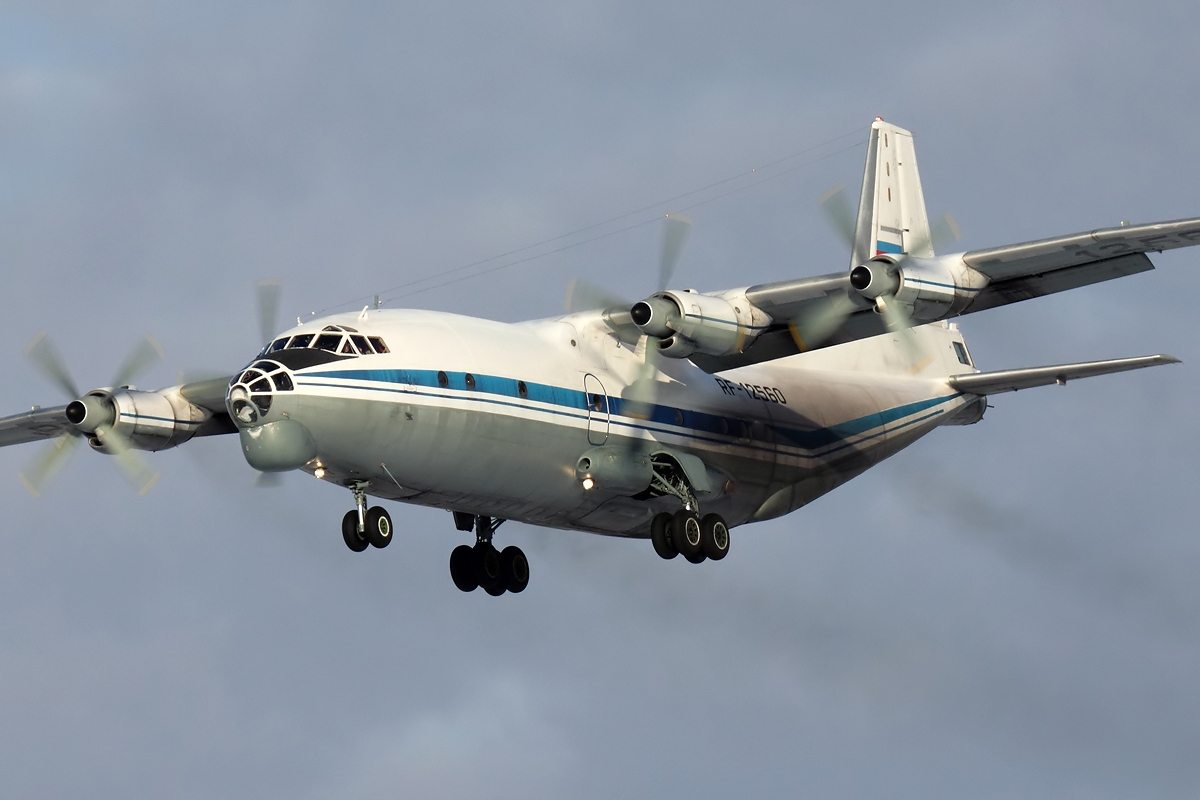
Another is the An-22 “Cock.” Much larger than the An-12, the counter-rotating turboprop-driven An-22 could carry as many as 290 paratroopers or four BMDs out to a range of 3,100 miles. Sixty-eight were produced, but the number of airframes available in the mid-90s had dropped to approximately forty-five due to accidents, combat losses, and normal wear and tear.
The main Soviet jet transport was the Il-76 “Candid,” an aircraft similar to the US C-141 or C-17. Over 900 of these four-engine airframes were produced in numerous variants. The military transport variant carries a payload of about fifty tons to a range of 2,700 miles.

Each of these designs is capable operating from unimproved dirt or gravel airstrips, making them highly versatile for delivering airborne troops to their objectives. Furthermore, unlike their western equivalents, each design comes armed with twin 23mm tail guns for self-defense, though the utility of these weapons against modern jet fighters is doubtful.
Culture
Despite the emphasis the Red Army placed on heavy armored forces, the desantniki are the ones who captured the imagination of ordinary Russians (much as the USMC has for Americans). Indeed, the Russians have a holiday dedicated to celebrating their paratroopers, a day on which desantnik veterans can go out into the streets in their distinctive blue-and-white striped undershirts and blue berets and drink (as if paratroopers anywhere needed the encouragement). More importantly, however, is that by the early 1990s desantnik generals had come to dominate the higher echelons Red Army leadership. This was largely due to the drawn-out war in Afghanistan, where the terrain and the enemy largely favored the use of light, airmobile troops over heaver tank and motor-rifle formations, allowing the airborne commanders to gain combat experience conducting successful light infantry operations. The background of these generals undoubtedly would have influenced how they chose to employ airborne forces in a conflict with NATO.
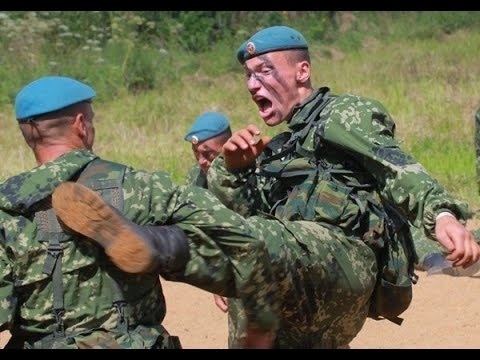
Employment
In such a conflict, the Soviet airborne divisions and brigades would likely have been used to secure key terrain and chokepoints on NATO’s strategic flanks (Norway, the Baltic, Turkey, and the GIUK Gap). Their most important contributions would likely have come in Norway, where the rugged terrain, narrow geometry of the front, and vital pieces of infrastructure such as ports and airfields presented the Soviets with a bevy of objectives that would need to be seized quickly to prevent the motor-rifle troops from bogging down. Could such a “Market-Garden” redux strategy have succeeded in an alternate 1994? Check out the Northern Fury novels to find out!
